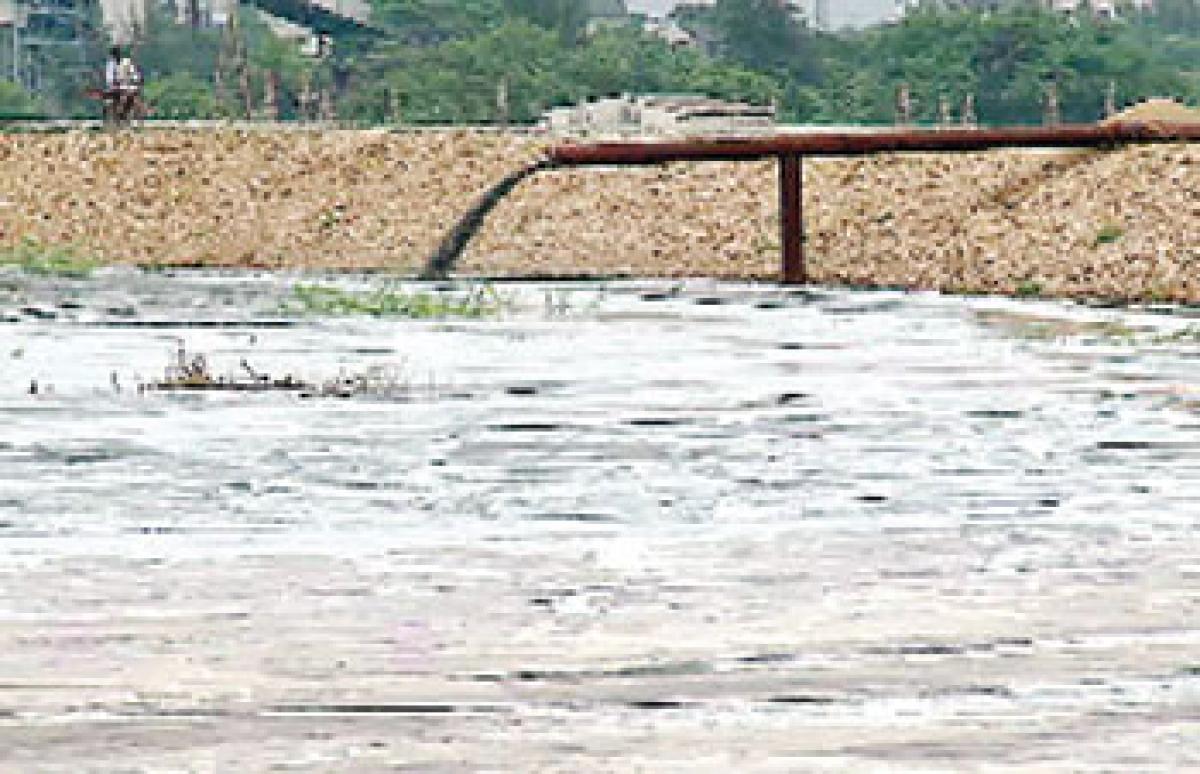Live
- Daily Horoscope for 15 December 2024: Embrace Today’s Insights of Your Zodiac Sign and Unlock Your Potential.
- Beyond The Flames
- CM warns officials of stringent action
- ‘Resignation of Avanthi Srinivas leaves no impact on YSRCP’
- Congress killers of Samvidhan: Modi
- Bejan Daruwalla’s horoscope
- Study warns: Ultra-processed foods may accelerate biological age
- CM pledges more political opportunities to Madigas
- Vizag attracts tourists as much as Kashmir
- Year-Ender 2024 Guide: Home remedies to relieve Period Pain.
Just In

While Indias coal fired power plants are far below the global benchmarks, efficiency wise, the fly ash spewed out into the environment was not just polluting the ecosystem but also making lives miserable for those residing in habitations around the power units. Despite the hue and cry raised by those affected, the State government appears to be completely indifferent.
Hyderabad: While India’s coal-fired power plants are far below the global benchmarks, efficiency-wise, the fly ash spewed out into the environment was not just polluting the ecosystem but also making lives miserable for those residing in habitations around the power units. Despite the hue and cry raised by those affected, the State government appears to be completely indifferent.
Be it the Kakatiya Thermal Power Project (KTPP) atChelpur in Warangal district or the Kothagudem Thermal Power Station (KTPS) at Paloncha in Khammam district, it is apparent that the villages located around these plants are sooted with thick layers of fly ash. Not just the villages, the agriculture fields and water bodies were also affected. Besides the health hazards faced by the people and cattle, the fly ash also affects agricultural crops and groundwater resources.
On the other hand, the ash utilization measures taken up by the NTPC unit at Ramagundam in Karimnagar district are fruitful as 65 per cent of the ash generated here is being consumed by various industries. Take the case of 400-odd families residing in Dubbapalli village, just a stone’s throw away from the Kakatiya Thermal Power Plant inChelpur. They have been up in arms against the State government since the 500 MW unit was commissioned in 2010, demanding resettlement.
At present, with the addition of another 600 MW power unit to the existing one, the fate of these villagers appears to be perilously poised. Kompalli, Pulluriramaiahpalli and Chelpur are among other villages that have been affected by fly ash. It may be mentioned here that the 1,100 MW KTPP that consume about 15,312 Metric Tonnes (MT) a day release 5,205 tonnes a day when worked at full throttle.
PonagantiMalahal Rao, a local and member of land displaced committee said: “Despite several pleas and protests, the authorities didn’t take any measures to provide resettlement and also jobs to the displaced families.” Moreover, all the developmental activities such as Indiramma housing scheme have been put on hold for the last five years in this village. A notice board put up in the name of the Sub-collector here states that no new constructions will be allowed as the government has plans of providing resettlement to the residents.
Meanwhile, the ash deposits are piling up at the 1,720-MW Kothagudem Thermal Power Station (KTPS) in Paloncha. The plant, which uses 13,000 MT of coal per day, releases 40 to 45per cent of its residue. KTPS (Operations and Maintenance) Chief Engineer B Laxmaiah said: “Though we were offering ash at a very meagre price or even at free of cost, there are no takers. As a result, only 10 per cent of ash generated by KTPS is disposed of and rest is piling up in the ash pond.”
As a result, the residents of nearby Kinnerasani, Pathasuraram, Pandurangapuram, P.Yanambailu and Ulavanuru villages are facing a plethora of health hazards due to the ash emitted from a dozen chimneys. Most of the villagers are prone to asthma, skin allergies and chronic bronchitis due to the pollution. Karakavagu and Budidavagu (stream of ash), true to its name, adjacent to the plant, is highly contaminated with the fly ash. It may be mentioned here that these streams end up in Kinnerasani River, one of the tributaries of Godavari.

© 2024 Hyderabad Media House Limited/The Hans India. All rights reserved. Powered by hocalwire.com







